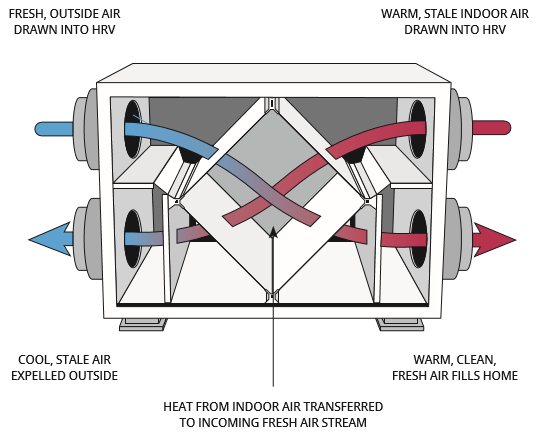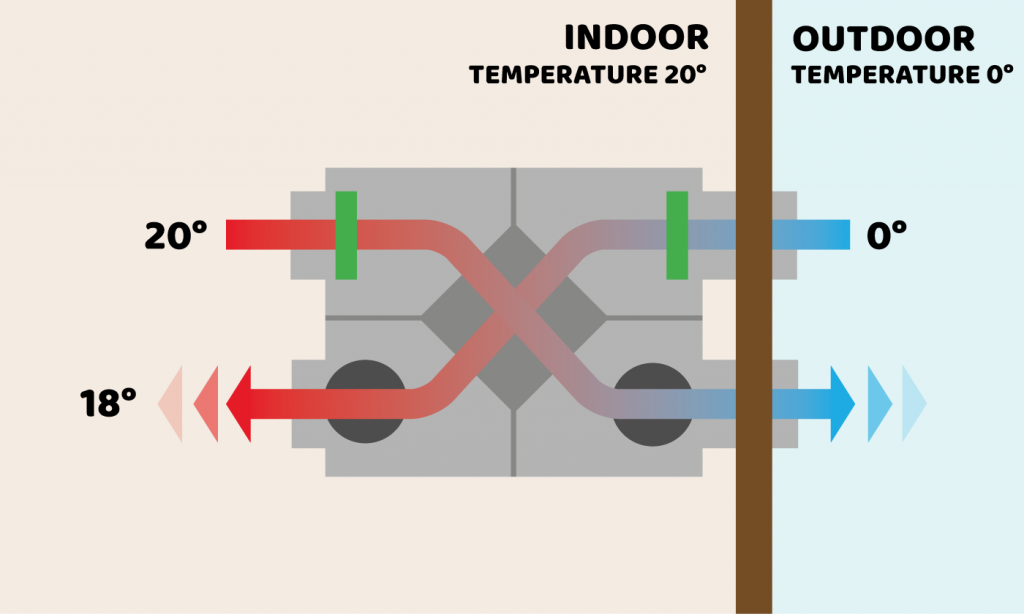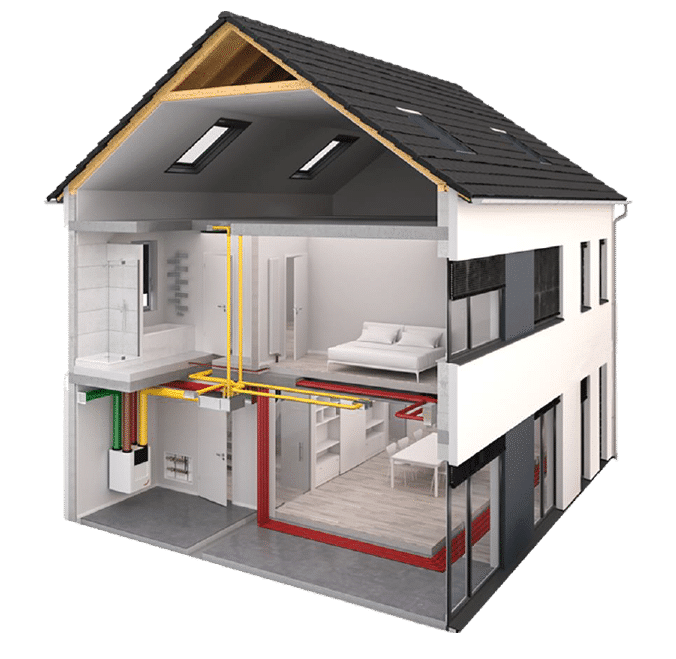The Importance of HRV in Sustainable Living
Exploring the Conveniences of Heat Recovery Ventilation for Power Performance in Homes
Heat Recovery Ventilation (HRV) systems offer house owners a sensible approach to enhancing power performance. By recovering warm from outward bound air, these systems can substantially lower cooling and heating prices. Furthermore, they give a constant supply of fresh air, enhancing interior air high quality and convenience degrees. As house owners think about sustainable choices, recognizing the nuances of HRV systems comes to be progressively crucial. What variables should one examine before making such an investment?
Comprehending Heat Recovery Ventilation Solutions

Just How HRV Boosts Indoor Air Top Quality

Power Savings: The Financial Advantages of HRV
Making best use of power effectiveness, heat recovery ventilation (HRV) systems use substantial economic advantages for homeowners. By recovering and recycling warm from exhaust air, HRVs markedly lower cooling and heating costs. This modern technology can cause energy savings of approximately 30%, relying on climate and use patterns. Property owners frequently observe minimized energy bills quickly after installation, making HRVs an economically wise financial investment gradually. Additionally, lots of regions offer rewards or refunds for energy-efficient upgrades, even more improving the monetary allure. As energy rates remain to increase, the cost-effectiveness of HRVs comes to be increasingly clear. Overall, the incorporation of HRV systems not only advertises energy effectiveness yet additionally contributes to long-lasting financial cost savings for families.
The Environmental Impact of Heat Recovery Ventilation
A considerable ecological benefit of heat recovery ventilation (HRV) systems depends on their ability to minimize general power consumption. By recovering warmth from exhaust air and moving it to incoming fresh air, HRV systems reduce the need for energy-intensive heating and cooling techniques. This reduction in energy need adds to lower greenhouse gas discharges, as much less fossil gas is required to preserve comfortable interior temperature levels. In addition, HRV systems improve indoor air top quality by successfully trading stagnant air with fresh outdoor air, decreasing dependence on mechanical air conditioning systems that can harm the atmosphere. In general, the implementation of HRV systems sustains lasting living techniques and aligns with worldwide initiatives to deal with environment change by promoting power performance in household settings.
Selecting the Right HRV System for Your Home
Exactly how can home owners assure they pick the best heat recovery ventilation (HRV) system for their demands? Initially, they should analyze their home's dimension and design, as these aspects affect air movement needs. Next off, examining the system's efficiency ratings is vital, as higher ratings suggest far better performance and power financial savings. House owners ought to additionally consider setup and upkeep prices, comparing different brands and designs for value. In addition, it is very important to examine sound levels, as some systems run more silently than others. Consulting with cooling and heating specialists can supply customized recommendations based upon certain home conditions. Analyzing customer reviews and guarantees can aid in making an informed choice, making certain that the selected HRV system successfully improves interior air high quality and power efficiency.
Regularly Asked Concerns

How Often Should I Clean or Preserve My HRV System?
The regularity of cleaning or keeping a warm recuperation ventilation (HRV) system typically relies on usage and useful reference ecological variables. Normally, it is advisable to carry out upkeep webpage every six months to ensure peak efficiency and air top quality.

Can HRV Systems Assist Decrease Moisture Degrees Inside Your Home?
HRV systems can effectively reduce interior humidity degrees by exchanging stagnant, moist air with fresh, drier air from outside. HRV Heat Recovery Ventilation. This procedure assists preserve a balanced indoor setting, enhancing comfort and protecting against moisture-related concerns
What Is the Lifespan of a Normal HRV System?
The lifespan of a common heat recovery ventilation (HRV) system varies, generally lasting in between 10 to 15 years. Regular maintenance can prolong its efficiency and functional life, ensuring peak performance throughout its use period.
Exist Any Kind Of Sound Concerns With HRV Systems?
Sound interest in HRV systems can emerge, specifically from follower procedure. However, lots of modern-day devices are designed to lessen audio levels, ensuring they operate silently while preserving performance, which attends to possible disruptions in living atmospheres.
Can I Install an HRV System Myself, or Do I Required a Professional?
The individual contemplated whether to mount the heat recovery ventilation (HRV) system directly or employ an expert. Generally, while DIY setup is possible, competence warranties appropriate capability and conformity with neighborhood structure codes, enhancing system efficiency.